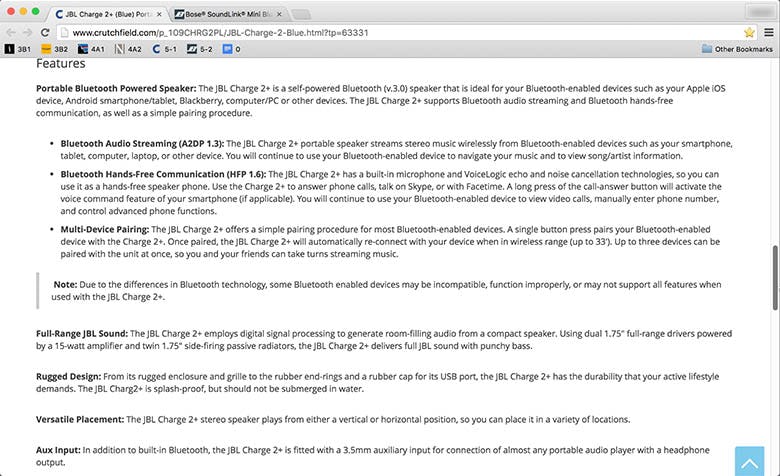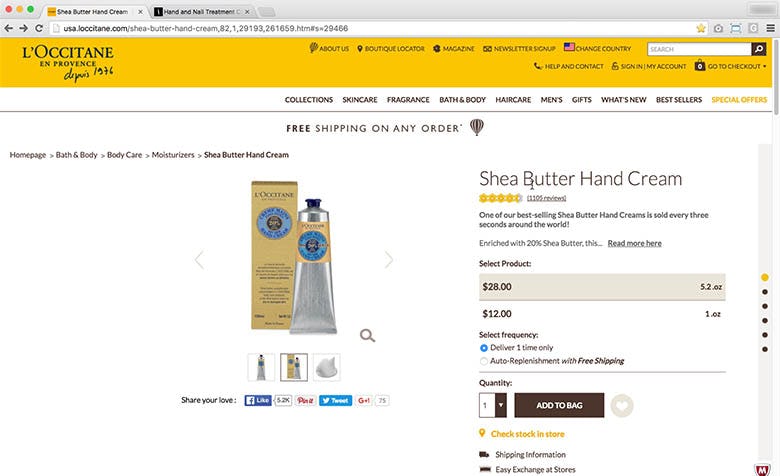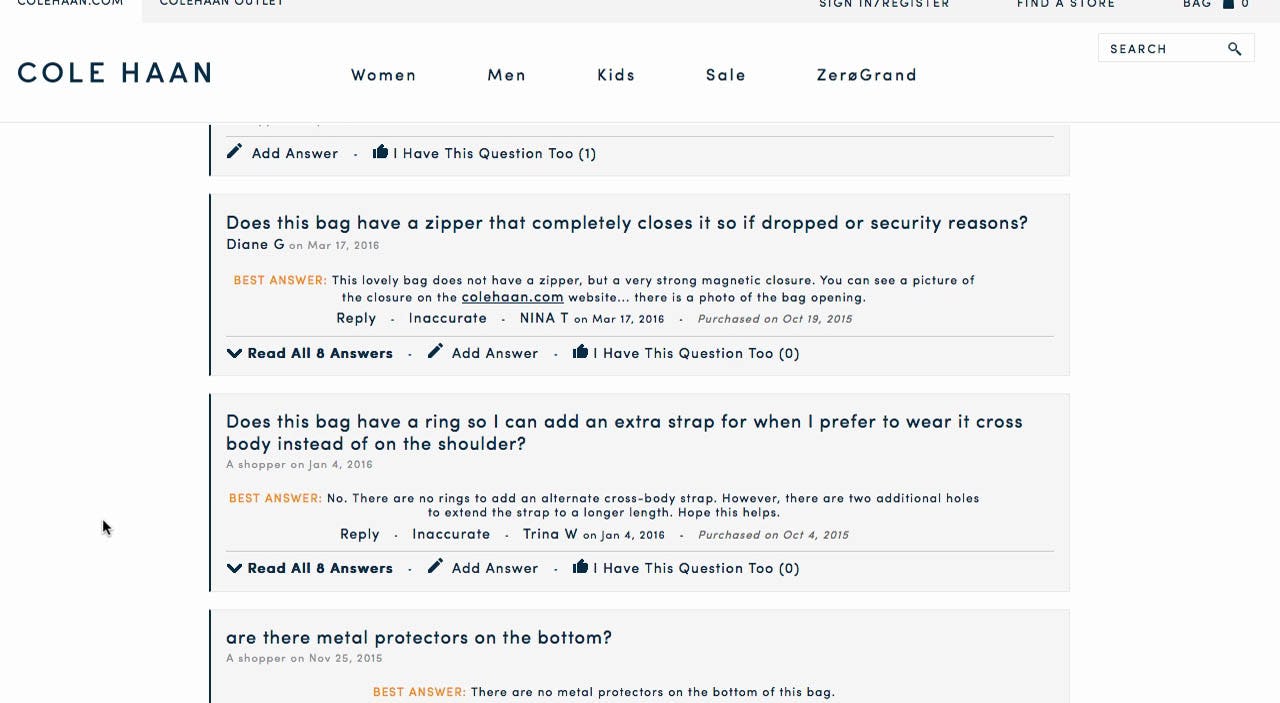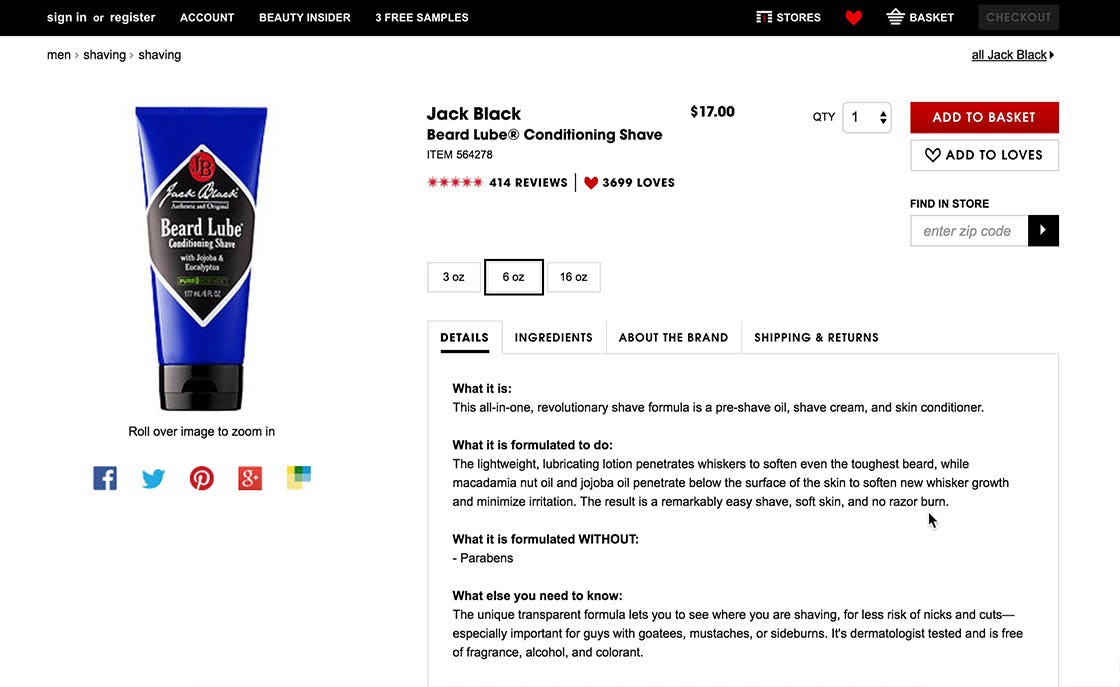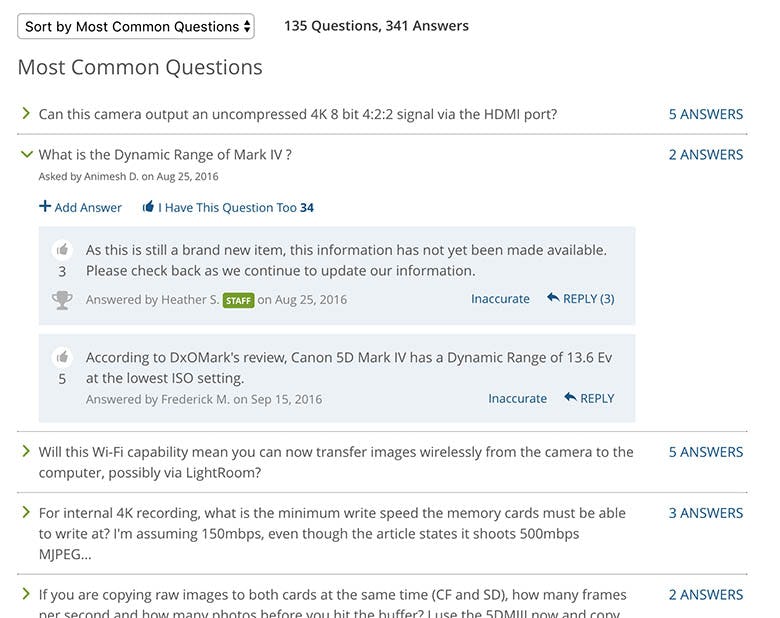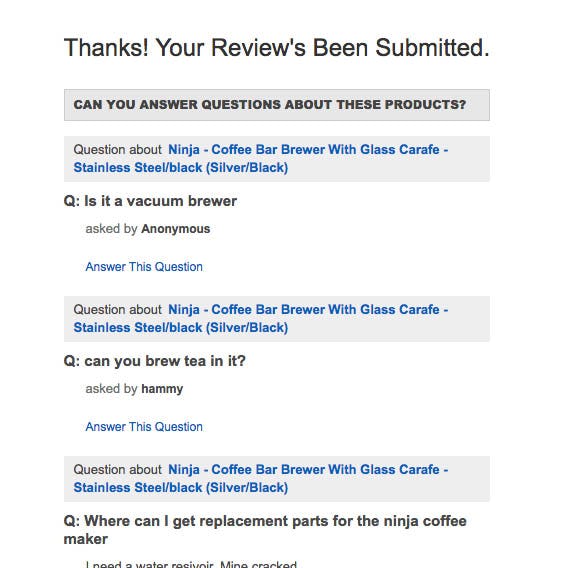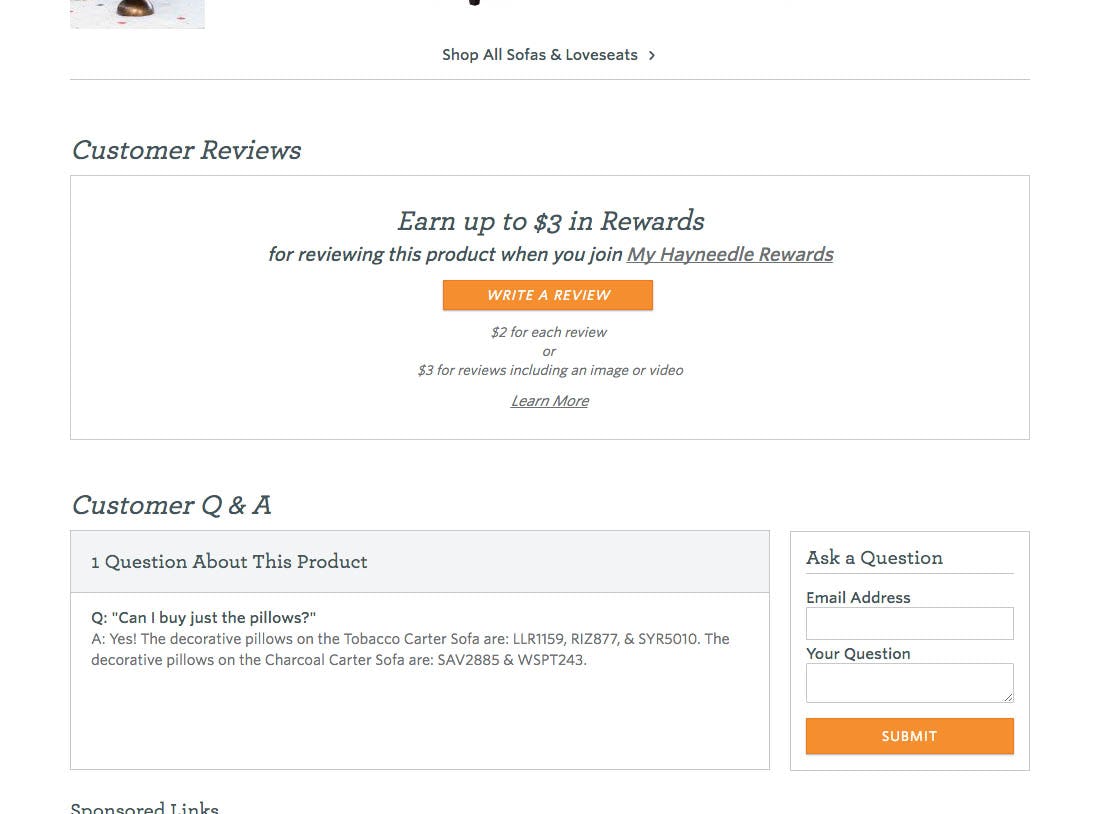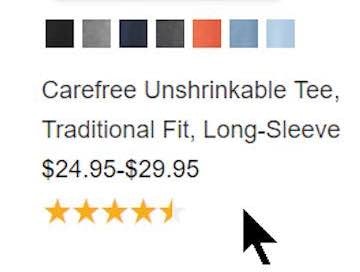Testing found FAQ and Q&A sections irreplaceable companions to the product description, by providing a structured space for answering even the most esoteric customer concerns and questions.
Our latest Product Page UX research revealed that users seek out a vast and varied range of information about products and their use cases when trying to determine a product’s suitability. ‘Frequently Asked Questions’ (FAQ) sections produced and maintained by the site or manufacturer, and ‘Questions & Answers’ (Q&A) sections generated by the “community” (i.e. other users), both proved immensely helpful to users during the test sessions. This was during testing especially true when users were seeking out information on unique use cases or wanted to learn from other users’ experiences.
FAQ UX and Q&A Page Design: Our Benchmarks
Despite the power of FAQs and Q&As, our product page UX benchmark shows that 55% of e-commerce sites don’t have community Q&As on their Product Details pages. And 70% of sites don’t have the ideal combination of both site-authored FAQs and community-driven Q&As. As a consequence, a majority of e-commerce sites suffer from one or more of the following issues:
- Product description length – Overly long product descriptions that try to address overly detailed questions and use cases
- Integrity of product claims – Users are naturally skeptical of any product claims made by the seller or manufacturer of the item due to their inherent bias in the transaction
- Unanticipated questions – Sites and manufacturers are (understandably) sometimes unable to predict every possible customer question and use case, yet this results in some customer concerns not being addressed anywhere on the product page
In this article we’ll dive into these 3 UX issues and how site-authored FAQs and community-driven Q&As resolve them. We’ll then elaborate on why testing found a “hybrid solution” to be the superior approach, and finally, we’ll share a couple of tips on how to increase community contributions to Q&As.
Issue 1) Product Description Length
Product descriptions alone will never be able to answer the virtually endless number of questions and concerns that users may have about a product – even if a site could predict and afford to answer all of these questions, it would turn the product description into a lengthy novel. Obviously that wouldn’t be an ideal strategy, since the product description should ideally be concise, easily scannable and generally appear inviting to all users.
“I know I’m not going to read all that. I don’t know what all these things mean,” a subject exclaimed when browsing a wireless speaker at Crutchfield (first picture). During testing many users skipped long and “uninviting” product descriptions, which in turn often resulted in them rejecting the product. Meanwhile, at L’Occitane, another subject was investigating a hand cream she was interested in, explaining: “I’d like to learn about the ingredients… are they cruelty free?” Yet after a bit of reading, she ultimately concluded: “I don’t see any of that. So that’s where I’d leave the product page and do a separate search of this brand.”_ Failing to address user questions and concerns on the product page was also a common cause of product abandonments.
During our product page testing, one of the major issues on product pages were unaddressed user questions and concerns. When the subjects felt unsure about a product, they either went off-site to research it further (at which point competitors were likely to pick them up), or simply gave up and abandoned the purchase.
Sites thus face a dilemma: on the one hand, their product descriptions must remain short and appealing which makes it impossible to all user question or concern about the product. Yet on the other hand, not addressing all of these questions is highly harmful to the user experience too, and may also result in abandonments. What’s a site to do? Enter FAQ and Q&A sections.
“Okay… it doesn’t have a zipper, good to know… there are metal protectors… is the bag heavy…“ a test subject read aloud. He initially visited the Q&A to learn more about the bag’s closures, but also learned more about other product attributes, some of which would probably have been overkill to include in the product description.
The product page research revealed that site-authored FAQs and community-driven Q&As are able to serve as natural extensions of, and supplements to, the product description – providing much greater detail than the generic product description. This way sites were able to keep their product descriptions concise and inviting to all users, while still addressing all customer questions and concerns on the product page – just not in the product description, but rather in their FAQ and Q&A sections.
In summary, site-authored FAQs and community-driven Q&As are able to address the ‘Product Description Length’ issue because the more unique (or even obscure) user questions and concerns can be relegated to these sections, which in turn allows the product description to stay concise and on point.
Issue 2) Credibility of Product Claims
Unsurprisingly, testing revealed that users tend to be skeptical about the product claims made by the site or manufacturer of the item. Even if the claims are completely legitimate in many instances, the user has no way of knowing, and most users have certainly been burned in the past by product claims that ultimately weren’t delivered on.
During testing, 25% of subjects scanned Q&As to learn more about the products (this was sometimes in conjunction with reviews). Although they often didn’t have a specific question in mind, they relied on information from Q&As to give them an overview of what they could expect from a product, and to learn what product use cases mattered to existing owners. Q&As are particularly powerful for novice users where a lack of domain knowledge tend to make them extra risk averse, while simultaneously also being keenly aware that they aren’t equipped to accurately distinguishing between legitimate vs overstated product claims made in a product description.
“This guy has had it for 2 years and it’s never rusted,” a subject explained when researching a grill at Home Depot during testing, continuing: “sometimes it’s better to just try to buy something like this online, because I’m no expert on grills, so reading the reviews and the questions and answers; it’s more helpful than just going into the store, and going in blind. The only person you can ask in the store is someone who’s working there. What, are they going to tell you it sucks?” Users tend to find reviews and Q&As written by other users a lot more credible.
This is where community-driven Q&As have a distinct advantage over site-authored FAQs – the authorship of the content fundamentally change most user’s perception of the content’s credibility – in particular positive product claims. In other words, community-driven Q&As are able to come across as much more credible to users than product descriptions because they aren’t written by the seller or manufacturer of the product.
Users find it more credible when another user says they’ve “used the product for 5 years without it ever breaking” than a product description written by the site (or manufacturer) boasting about the product’s durability and weather-resistance.
While testing showed “customer reviews” to be the most popular resource among users looking to learn from other users’ experiences, when a community-driven Q&A was available, it was utilized by 40% of the test subjects. Hence, even when customer reviews are available, Q&As were still sought out by a significant number of users.
Interestingly, users were not shown to specifically seek out negative information about products while browsing Q&As (unlike reviews, where users frequently seek out those with 1 and 2-star ratings). In this way, the format of Q&As may result in a more positive narrative of the product without sacrificing the credibility of user-generated content.
In summary, community-driven Q&As are able to overcome the ‘Credibility of Product Claims’ issue that site- and manufacturer-authored content suffers from because this user-generated content doesn’t come with the same inherent biases.
Issue 3) Unanticipated Questions
After benchmarking 400+ product pages and their respective product descriptions and FAQ and Q&A sections, it’s clear that some users have truly strange questions about products. Yet just because some questions appear to us as site owners and reviewers to be strange (and sometimes bordering on the obscure), they are obviously important to those users – and who are we to judge what is and isn’t a legitimate user concern or use case?
This proved to be an unexpected benefit of community-driven Q&A sections: their ability to reveal questions that the site’s UX copywriter didn’t necessarily think of when writing the product description and FAQ section.
“So it’s all in one, pre-shave oil, shave cream, skin conditioner,” a subject at Sephora explained, “So that takes care of… [scans the text] no razor burn, right off the bat. It doesn’t say what it smells like though.”_ It’s of course impossible for us to know whether Sephora’s copywriter (or Jack Black’s writer) deliberately left out information on the scent of this “Beard Lube”, but it certainly requires a great and highly empathetic mind to anticipate every single user question or concern about all items in a site’s product catalog.
Q&A sections provide a space for users to ask questions and share answers. This means that product with niche segments that have special use cases for the product may be able to support each other, and go into details that typically wouldn’t be feasible / cost-effective for a site’s copywriter to educate themselves on in order to then preemptively write FAQ answers addressing those user concerns.
In summary, community-driven Q&As can help overcome the ‘Unanticipated Questions’ issue by providing a space for users to ask those questions, and thus illuminate any user concerns and questions that were “neglected” when writing the product description.
Why a Hybrid Solution is Required for Optimal FAQ UX
It’s obvious that community-driven Q&As have some unique benefits, yet our testing showed that they cannot stand alone. Site-authored FAQs are required too.
Site-authored FAQs are by their very nature curated and maintained by the site. This means that they can be written consistently and concisely. In other words: they can be of very high quality. Furthermore, FAQs don’t depend on an activity community, and the site can thus ensure that the section always has content, regardless of the product’s popularity or recency (a just-published product, even if popular down the road, will naturally not have any user-generated content since users haven’t yet had a chance to post it).
The collapsed Q&A presented by Bose was repeatedly observed to be easy to use for the test subjects. Both the questions and answers are provided by Bose and, hence, pre-populated. This makes the Q&A uniform and easy to scan, and ensures the content is of high quality – and makes the content available for all products throughout the entire site.
In practice, many of the community-driven Q&As we’ve reviewed have often had a large amount of questions left unanswered, and sometimes they don’t have any questions at all. Both these scenarios ruin the entire value of the Q&A. Furthermore, duplicate or rephrased identical questions are common, and the quality of answers can be inferior. It’s important to keep these limitations in mind – while community-driven Q&As are fantastic, they aren’t panaceas.
Two versions of the “Hybrid Solution” were identified during testing. The first is simply having two sections (like Apple, in the first image). The second solution was to have a Q&A where site staff also answers user questions (like B&H Photo, in the second image) – although this last approach requires the site to pre-populate the section with staff questions; also, it’s important that user can still also answer questions, or the credibility benefits are lost.
The best-performing solution during the usability tests proved to be a “Hybrid Solution”, with both site FAQs and user-generated Q&A content. This FAQ approach is currently only found at 28% of the benchmarked e-commerce sites. These 28% sites will, for example, provide a pre-populated FAQ for the top selling products, where the site asks and answers a handful questions – but next to or below also allow users to contribute additional questions and answers in a community-driven Q&A section.
This approach mitigates the greatest drawback of purely user-generated Q&As (not enough content, and lower quality content) and the drawbacks of only site-provided FAQs (resource intensive, difficult to predict good questions, and lack of credibility).
Encouraging Community Contributions
A major challenge of community-driven Q&As is ensuring there’s actually content in the section – particularly on smaller sites, and especially for low-popularity products. During testing, we discovered a couple of smart ways to increase community contributions.
One approach involved asking users who had just submitted a review if they could answer some of the unanswered questions in the Q&A sections. A user that just left a review of the product will likely be fairly familiar with the item and thus be well-equipped to answer questions about it. Also, these users have already shown that they are willing to contribute content to the site, and may even be signed in, greatly increasing the likelihood that this is a user that is also willing to contribute answers to the Q&A section.
Hayneedle provide “reward points” to users that write product reviews – with additional rewards being given for “high quality reviews” that include an image or video.
The same way that some sites provide “rewards” to user that contribute product reviews in order to increase contributions and eliminate “empty” review sections (note: most sites only offer “bribes” so long as there’s no or very few reviews available for a product). This approach could be adopted for Q&A sections too, where a similar “bribe” could be given to users if their comments on a question were marked as “best answer” or “resolves the question”, or even for users who ask questions that other people “upvote”.
“All The Pieces Matters,” Especially For FAQ Page Designs
Site-authored FAQs and community-driven Q&As play integral roles in the quest for a well-balanced and fully featured product page. These sections obviously cannot replace the product description, nor should they try to – rather, these sections should be seen as extensions of the product description.
It is the interplay between all of this content that makes it work. A standalone product description would either get too long or leave important user concerns unaddressed. Yet a standalone site-authored FAQ is similarly deficient: it won’t be nearly as credible as a community-driven Q&A, and may overlook more esoteric customer concerns. But then again, a standalone community-driven Q&A wouldn’t work either: it would start out empty, and once it does receive content it won’t be nearly as scannable or high quality as properly curated site-authored content.
It’s obviously not easy to get all these elements right – otherwise 70% of sites wouldn’t fail at it. Yet it is worth it, because the true rewards come from the harmony between these different content sections, which is what enables the “Hybrid FAQ and Q&A” solution to overcome the three issues we’ve described throughout this article:
- Product description length – By relegating the more unique (or even obscure) customer questions and concerns to FAQ and Q&A sections, the product description can stay concise and on-point.
- Credibility of product claims – Most users are highly skeptical of any product “claims” made in product descriptions and other site-authored content due to the inherent bias; an issue that community-driven Q&As (along with customer reviews) tend to overcome.
- Unanticipated questions – Community-driven Q&As are able to illuminate user concerns and questions that weren’t thought of when writing the product description.
Of course, in order to reap the benefits of community-driven Q&As, the content must actually exist, and “high quality” contributions should be rewarded when possible. This is where strategically timed prompts and even “bribes” (such as “rewards point” and coupons) enter the picture. Of course, customer support should ideally also monitor and reply to customer inquiries, and possibly update the product page content, based on the Q&A content.
At the end of the day, it’s about putting together the product page elements in such a way that the likelihood of a user leaving the product page with an unanswered question is brought to an absolute minimum without scaring users away with product descriptions worthy of a book cover.
This article presents the research findings from just 1 of the 700+ UX guidelines in Baymard – get full access to learn how to create a “State of the Art” ecommerce user experience.


